| Listing 1 - 10 of 25 | << page >> |
Sort by
|

ISBN: 9781850439370 9781850439387 1850439370 Year: 2005 Publisher: London Tauris
Abstract | Keywords | Export | Availability | Bookmark
 Loading...
Loading...Choose an application
- Reference Manager
- EndNote
- RefWorks (Direct export to RefWorks)
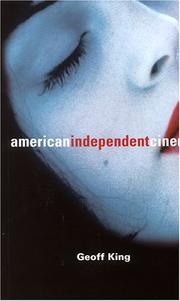
ISBN: 0253218268 0253347025 Year: 2005 Publisher: Bloomington Indianapolis Indiana University Press
Abstract | Keywords | Export | Availability | Bookmark
 Loading...
Loading...Choose an application
- Reference Manager
- EndNote
- RefWorks (Direct export to RefWorks)
#SBIB:309H1313 --- #SBIB:309H1320 --- Geschiedenis en/of organisatie van het filmwezen: algemeen en per land (met inbegrip van de rol van het filmwezen in de ontwikkelingsproblematiek) --- De filmische boodschap: algemene werken (met inbegrip van algemeen filmhistorische werken en filmhistorische werken per land) --- Motion pictures --- United States --- History --- Motion picture industry --- Independent filmmakers --- Independent moviemakers --- Motion picture producers and directors
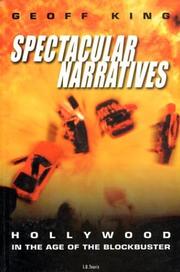
ISBN: 1860645739 Year: 2000 Publisher: London Tauris
Abstract | Keywords | Export | Availability | Bookmark
 Loading...
Loading...Choose an application
- Reference Manager
- EndNote
- RefWorks (Direct export to RefWorks)
#SBIB:309H520 --- Audiovisuele communicatie: algemene werken
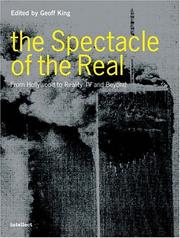
ISBN: 1841501204 9786610477005 1280477008 1841509183 9781841509181 9781280477003 9781841501208 Year: 2005 Publisher: Bristol ; Portland : Intellect Books,
Abstract | Keywords | Export | Availability | Bookmark
 Loading...
Loading...Choose an application
- Reference Manager
- EndNote
- RefWorks (Direct export to RefWorks)
Hollywood special effects offer spectacular creations or re-creations that make claims to our attention on the grounds of their 'incredible-seeming reality'. They can appear both 'incredible' and 'real', their appeal based on their ability to 'convince'-to appear real in terms such as detail and texture-and on their status as fabricated spectacle, to be admired as such. At a seemingly very different end of the audio-visual media spectrum, 'reality' television offers the spectacle of, supposedly, the 'real' itself, a 'reality' that ranges from the banality of the quotidian to intense interperso
Realism in motion pictures. --- Reality television programs --- Reality television programs. --- September 11 Terrorist Attacks, 2001 --- History and criticism. --- Press coverage. --- Realism in motion pictures --- Realism in moving-pictures --- Motion pictures --- Reality-based television programs --- Reality shows (Television programs) --- Nonfiction television programs --- Press coverage --- History and criticism --- Mass media --- Study and teaching.
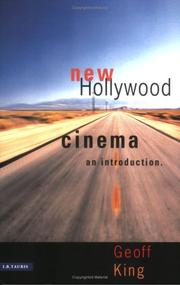
ISBN: 9781860647505 Year: 2002 Publisher: London Tauris
Abstract | Keywords | Export | Availability | Bookmark
 Loading...
Loading...Choose an application
- Reference Manager
- EndNote
- RefWorks (Direct export to RefWorks)
Book
ISBN: 9781788310185 9781786725561 9781786735560 1788310187 Year: 2019 Publisher: London I.B. Tauris
Abstract | Keywords | Export | Availability | Bookmark
 Loading...
Loading...Choose an application
- Reference Manager
- EndNote
- RefWorks (Direct export to RefWorks)
Art cinema occupies a space in the film landscape that is accorded a particular kind of value. From films that claim the status of harsh realism to others which embody aspects of the tradition of modernism or the poetic, art cinema encompasses a variety of work from across the globe.But how is art cinema positioned in the film marketplace, or by critics and in academic analysis? Exactly what kinds of cultural value are attributed to films of this type and how can this be explained? This book offers a unique analysis of how such processes work, including the broader cultural basis of the appeal of art cinema to particular audiences.Geoff King argues that there is no single definition of art cinema, but a number of distinct and recurrent tendencies are identified. At one end of the spectrum are films accorded the most 'heavyweight' status, offering the greatest challenges to viewers. Others mix aspects of art cinema with more accessible dimensions such as uses of popular genre frameworks and 'exploitation' elements involving explicit sex and violence. Including case studies of key figures such as Michael Haneke, Pedro Almodóvar and Jean-Pierre and Luc Dardenne, this is a crucial contribution to understanding both art cinema itself and the discourses through which its value is established. (Provided by publisher)
Motion pictures --- Motion picture audiences. --- Aesthetics. --- Cinéma --- Esthétique --- Film --- Esthétique. --- Motion picture audiences --- #SBIB: --- Film audiences --- Filmgoers --- Moviegoers --- Moving-picture audiences --- Performing arts --- Aesthetics --- Audiences --- #SBIB:309H1326 --- #SBIB:316.7C212 --- Films met een amusementsfunctie en/of esthetische functie: genres en richtingen --- Cultuursociologie: film --- Cinéma --- Esthétique.
Book
ISBN: 1282620312 9786612620317 0748637478 9780748637478 9780748637454 0748637451 9780748637461 074863746X 9781282620315 6612620315 Year: 2022 Publisher: Edinburgh
Abstract | Keywords | Export | Availability | Bookmark
 Loading...
Loading...Choose an application
- Reference Manager
- EndNote
- RefWorks (Direct export to RefWorks)
Elusive, subtle and atmospheric, Lost in Translation was one of the indie hits of 2004, earning widespread critical praise, awards and success at the box office. But what was the basis of its appeal and how exactly is the film marked as a distinctly independent work? This book, by a leading authority on contemporary American indie cinema, provides an in-depth analysis of the balance of more and less mainstream qualities offered by the film at all levels, from industrial factors such as funding, marketing and release strategy to formal qualities such as its low-key narrative structure and the impressionistic use of imagery and music. Other issues examined in detail include the role of stardom, particularly the role of Bill Murray, the distinctive 'auteur' contribution made by writer-director Sofia Coppola and the film's ambiguous relationship with the romantic comedy genre. Textual and industrial analysis is also supplemented by consideration of online responses to the film that offer insights into the various ways in which it was either appreciated or rejected by viewers. Key Features * A unique attempt to pin down the precise nature of the film and its appeal to viewers * A major contribution to our understanding of the contemporary American indie film landscape * Written by a leading authority on American indie film
Book
ISBN: 0857728164 9780857728166 0857728857 9780857728852 Year: 2016 Publisher: London New York
Abstract | Keywords | Export | Availability | Bookmark
 Loading...
Loading...Choose an application
- Reference Manager
- EndNote
- RefWorks (Direct export to RefWorks)
What defines 'quality' in contemporary Hollywood film? Although often seen as inhospitable to such work, the studios of the blockbuster-franchise era continue to produce features that make claims to higher status. Films such as The Social Network, The Assassination of Jesse James by the Coward Robert Ford and Mystic River are marked as distinctive from the mainstream norm. But how exactly, and how are such qualities mixed with more familiar Hollywood ingredients, as found in larger doses in other examples such as Blood Diamond and the blockbuster-scale Inception? Quality Hollywood is the first book to address these issues, featuring close analysis of case study films, critical responses and the wider notions of cultural value on which these draw. Geoff King argues that such films retain a presence as a minority strand of studio output. The reasons for this combine factors relating to economics, the power of certain filmmakers and Hollywood's investment in its own prestige.
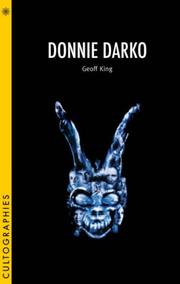
ISBN: 9781905674510 Year: 2007 Publisher: London : Wallflower,
Abstract | Keywords | Export | Availability | Bookmark
 Loading...
Loading...Choose an application
- Reference Manager
- EndNote
- RefWorks (Direct export to RefWorks)
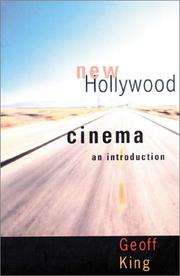
ISBN: 0231127588 Year: 2002 Publisher: New York Columbia University Press
Abstract | Keywords | Export | Availability | Bookmark
 Loading...
Loading...Choose an application
- Reference Manager
- EndNote
- RefWorks (Direct export to RefWorks)
| Listing 1 - 10 of 25 | << page >> |
Sort by
|

 Search
Search Feedback
Feedback About UniCat
About UniCat  Help
Help News
News